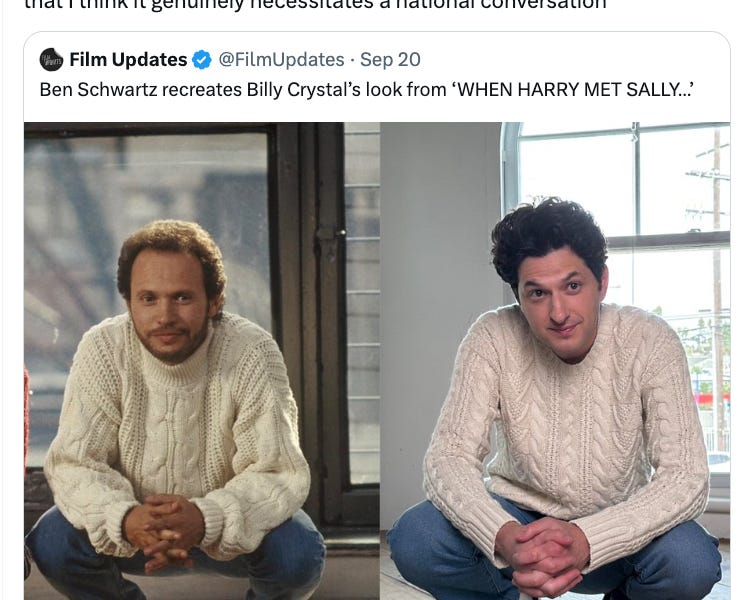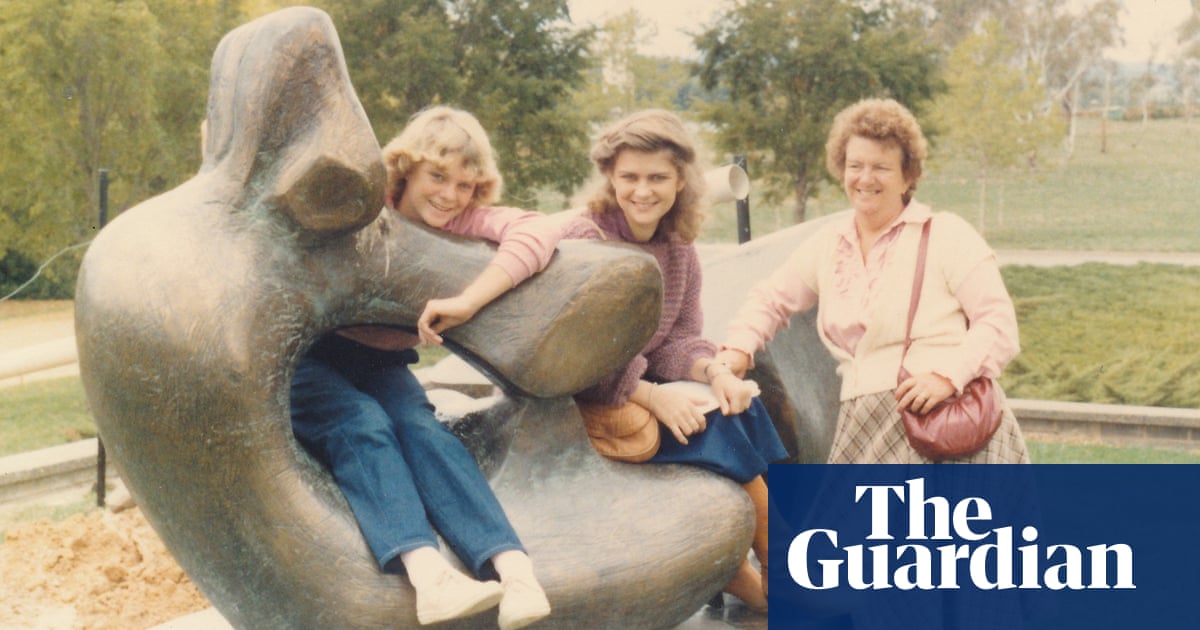The Wool Wire | December 13, 2023
Keeping it in the farm-ily, cherishing waste wool, trash-talking trashy sweaters, wool sweaters for cars, and great migrations.

News snippets from the wool world
Here in Maine, our snowy winter wonderland has been reduced to puddles and fog—but with winter solstice just eight days away, I know the deep freeze will return soon enough.
And that has left me concerned about a recent Wall St. Journal article that claimed cotton was a great alternative to cashmere for winter sweaters. That's a dangerous claim, especially with extreme weather events on the rise.
In my ongoing quest to change minds and save lives, I've decided to tackle this article in my first of a new series of YouTube videos for The Wool Channel, called Wool Shorts. The plan is to release 12 episodes total, after which I'll share metrics with Foundation Flockers and we can discuss whether to keep it going. (Be sure to subscribe to TWC's YouTube channel so you don't miss them.)
And speaking of the Flock, our next readalong is happening! We're reading Helen Rebanks' The Farmer's Wife: My Life in Days, for a January 17, 2024, discussion in the Community. All Flockers welcome.
Now, let's get back to this week's Wool Wire. We talk about waste wool, trashy sweaters, wooly wagons, and great migrations. But first, we head to Australia to see what makes one farming family's sweaters so special.
Keeping it in the Farm-ily
At a time when the distance between links in the supply chain seems to get wider and wider, one sixth-generation wool-growing family in Australia is bucking the trend. They've created a garment brand called Wyndhurst Knitwear, whose entire supply chain does not stray past the boundaries of Australia and New Zealand.

All of the wool in Wyndhurst garments is sourced from their own farm in the Flinders Ranges of South Australia before being processed in Victoria, spun into yarn in New Zealand, and then knit into garments in Melbourne using Japanese 3D knitting machines that generate almost zero waste. See the sweaters and read more.
Trailing the Sheep
When I think about seasonal sheep migrations, I think of The Swiss Shepherdess Claire Jeannerat and her bell-wearing flock clanging briskly through photogenic Swiss villages as they make their way down from the high Alps to their winter home.
But the same migration (called transhumance) happens every spring and fall around the world, including right here in the United States. Sun Valley, Idaho, has a whole festival dedicated to it. And in Wyoming, Mountain Meadow Wool Mill shared a beautiful short video showing how some Wyoming farmers get their flocks down from the high-altitude summer grazing land.
Wooly Wagons Make a Comeback
A century ago, most automobile upholstery was made of wool—the scraps of which were often donated to the Salvation Army to be made into coats for children. The practice came to a halt as the wool was replaced by squeaky plastics.
But in the past few years, several car makers have made tentative moves to bring wool back into the car—and onto the car, in the form of car covers like the snazzy red one below.


Woolmark does a good job of surveying the current landscape for wool automotive interiors.
While some of the auto brands may beyond the reach of us mere mortals, it's still an encouraging trend I hope will continue.
Pellets Please!
Wool pellets continue to take off as more wool producers seek to add value to fibers that had previously been discarded as waste. I've talked a lot about wool pellets themselves and pelletizing operations in Utah, Canada, and even Croatia. Now Kami Noyes, of Ranching Tradition Fiber in Montana, has a pelletizing machine up and running.

I give Noyes an extra tip of the hat for getting her Targhee-Ramboillet pellets analyzed by her local agricultural extension office, revealing not just the usual N-P-K composition but also levels of sodium, magnesium, iron, calcium, manganese, zinc, and my personal favorite, boron. On her website, Noyes also mentions wool pellets' effectiveness in softening hard clay soils—something I hadn't read about before but which makes perfect sense.
Congratulations on this next step, Kami!
A Woo-Hoo for LooHoo
In our November Flock Talk I gave my recommendations for wooly gifts that help people experience the qualities of wool fiber in action. While the wool dryer ball market reached saturation years ago, to the point where you can even buy super cheap ones on Amazon, I still put them on my list.
They really are useful, reducing drying time by as much as 25 percent while also reducing lint and static build-up.
You can find wool dryer balls fairly easily. But I'm especially partial to LooHoo, a small, woman-owned business based here in Maine. They make their dryer balls in Maine using wool that was processed in a Maine mill, from sheep raised in the USA. I'll admit it, I'm also a sucker for a cute name.

The Story Behind Subpar Pullovers
One of the most vindicating things I read this year was Amanda Mull's story for the Atlantic, titled, Your Sweaters Are Garbage. (That's a gift link good for 10 days.) In it, Mull confirmed that most of the mass-produced sweaters we see in stores today really are of lower quality, and she explained the practices and changing legislation that enabled this slow, steady slip toward mediocrity.
Just a few days ago, I was delighted to hear Amanda interviewed by Anne Helen Petersen for The Culture Study podcast. It may come as no surprise that Mull is very much on Team Wool.

Finally, speaking of Team Wool and cherished sweaters, here's a nugget of warm, fuzzy motivation for anyone trying to get those knitted gifts done in time for the holidays.

There you have it!
Thanks as always for your readership and your support.
Until next time,
Clara









